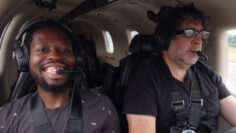ISA in Aviation
How can pilots account for ISA deviations?
Pilots can use performance charts, tables, and aircraft operating manuals specific to their aircraft type to adjust for ISA deviations. Onboard instruments and avionic systems can measure temperature, pressure, and altitude to calculate actual atmospheric conditions.
What is the tropopause in the context of ISA?
The tropopause is the atmospheric boundary layer between the troposphere and the stratosphere. In the context of ISA, tropopause is important because it’s the altitude at which the standard temperature lapse rate ceases. This point is at an altitude of about 36,000 feet, where the temperature stops decreasing with altitude and remains constant at -56.5 degrees Celsius (-69.7 degrees Fahrenheit) up to about 65,000 feet.
What’s the significance of ISA in designing and testing aircraft?
ISA conditions serve as a benchmark for aircraft designers and manufacturers. When designing and testing new aircraft, engineers use ISA to standardize the conditions under which the aircraft is expected to operate. This way, they can calculate theoretical performance metrics and ensure the aircraft meets certain criteria under these standardized conditions. When the aircraft is later flown in real-world conditions, any deviations from the standard can be noted and performance can be recalibrated accordingly.







